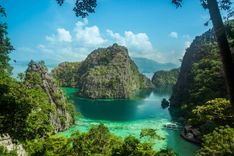Safety in the Philippines
The Philippines is a generally safe place for tourists, but it’s always wise to take some basic precautions. Most safety concerns are limited to specific areas, mainly in western Mindanao and the Sulu Archipelago, which are far from the usual tourist spots. Most visitors experience a warm welcome and plenty of hospitality.
Petty theft can sometimes happen in busy cities like Manila and Cebu City. To avoid issues, keep your valuables secure, avoid showing off expensive gear or jewelry, and use hotel safes when you can. On night buses or ferries, make sure to keep your bag secure or even sleep with it as a pillow.
During the rainy season, keep an eye on the weather forecast and be ready to change your plans if needed. Plus, being in the Pacific Ring of Fire, earthquakes and volcanic activity are always a possibility. It’s important to follow local advice if something happens.
Transportation safety
Getting around in the Philippines can be a bit tricky at times, especially when it comes to transport by sea. Ferries are a common way to travel, but it’s safest to pick established companies with larger boats for longer trips. Always check the weather beforehand, and make sure life jackets are available on board.
Driving at night can be risky due to poorly lit roads and unpredictable drivers in some areas. If you're driving at night, stay cautious, especially on rural roads.
Motorbike and scooter rentals are popular among tourists, but the roads can be chaotic. If you decide to rent one, always wear a helmet, even if it’s not a common practice in the area.
Health in the Philippines
The tropical climate in the Philippines means there are some health things to consider. Mosquito-borne illnesses like dengue fever are common, so take precautions to avoid bites. Use insect repellent with DEET, wear long sleeves at dawn and dusk, and sleep under a mosquito net in rural areas.
Healthcare access is best in cities like Manila, Cebu, and Davao, where you'll find modern medical facilities. However, on more remote islands, healthcare can be limited to basic clinics. It’s essential to have travel insurance with evacuation coverage. Learn more in our Philippines travel health tips.
















